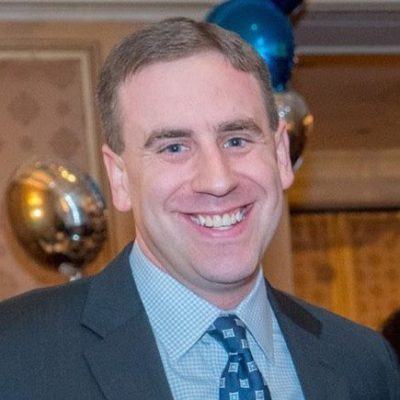When I visited some of the poorest neighborhoods in Cancun with AJWS in 2010, my greatest fear was not what I would see, but what I might feel. I worried that I would feel—as so many people do—that I needed to fight for justice so that I could save the people I met there, providing for them what they could not provide themselves. This sentiment is common, but dangerous and demeaning, because a belief that the privileged must save the poor assumes that people in need lack the ability to shape their own destinies; that it is a lack of aptitude or ability that lies at the core of their misfortune.
Muhammad Yunus, the Nobel laureate and founder of the Grameen Bank in Bangladesh, argues that if we want to eradicate global poverty, we must first change our assumptions about why poverty exists. He writes:
To me, poor people are like bonsai trees. When you plant the best seed from the tallest tree in a tiny flowerpot, you get a replica of the tallest tree, only inches tall. There is nothing wrong with the seed you planted; only the soil base that you gave it is inadequate. Poor people are bonsai people. There is nothing wrong with their seeds, but society never gave them the proper base to grow in. All it takes to get poor people out of poverty is for us to create an enabling environment for them. Once the poor can unleash their energy and creativity, poverty will disappear very quickly.[1]
People who live in poverty can accomplish the same things as people living ensconced in wealth and privilege, and it demeans people’s humanity when we assume that they are incapable of bettering their own lives. This understanding—that people’s innate skills and talents can be inhibited by their circumstances or environment—is one that is echoed in this week’s parashah and that has profound implications for how we address poverty and work for social change.
Parashat Vayakhel concludes the Israelites’ construction of the Mishkan—God’s Tabernacle in the desert—telling us that the Mishkan wasn’t built by trained architects or craftsmen, but by “every person whose heart stirred them up, and every one whom his spirit made willing.”[2] Each time I read this parashah, I am amazed at how the Israelites, who spent their entire lives engaged in the mimetic tasks of slave labor, could build a shrine that required fine craftsmanship. Responding to this question, the Ramban states,
The “stirring up of the heart” implies the arousing of their capacity to undertake the work. For none [of the Israelites] ever learned these skills before from any teacher nor had ever practiced them before. But each one discovered his natural talent or aptitude for the task, his heart rising as it were to the Divine challenge enabling him to come into Moses’ presence and say: “I can do it.”[3]
For the Ramban, slavery limited the Israelites’ opportunity to learn craftsmanship, but it did not make the Israelites inherently incapable of building the Mishkan. Rather, the backbreaking conditions of slavery caused the creative potential of the Israelites in Egypt to atrophy. When commanded to construct the Mishkan, Israelites who realized that previous circumstances did not forever dictate their capacity to achieve developed “confidence in their own power to undertake the work”[4] of building the Mishkan. Once given the opportunity to succeed, the Israelites became what they were always capable of becoming.
The Ramban’s perspective on how the Israelites came to construct the Mishkan has profound implications for how we approach tzedakah. Our rabbis understood that the highest acts of tzedakah create conditions to help poor people succeed using their natural talents. The Rambam famously states that the highest form of charity involves giving a loan or entering into a partnership with a poor person “in order to strengthen his hand he need no longer be dependent upon others.”[5] Meir Tamari, former chief economist at the Bank of Israel, writes that this approach to tzedakah focuses on “breaking the cycle of poverty and enabling the poor to establish themselves as independent and productive members of society.”[6] Like Yunus’s metaphor of the bonsai trees, Jewish tradition recognizes that poor people are inherently creative and capable, and, given the right conditions, will succeed when their innate abilities are given the opportunity to flourish.
The greatest tragedy of the Israelites’ enslavement was not the backbreaking labor, but the suppression of the Israelites’ creative potential. Today, hundreds of millions of people around the world have their rights suppressed on a daily basis, stifling their ability to choose a path for their future and construct it themselves. If we are to be partners with the poor, then we must embrace a vision of tzedakah that honors the inherent capabilities of all humanity, recognizing that poverty usually comes from lack of opportunity, rather than lack of ability.
Less than a generation removed from slavery, Parashat Vayakhel celebrates a moment of collective triumph for the Israelites’ previously untapped potential. May we embrace a vision of tzedakah that will enable poor people to envision and construct their own Mishkan—a brighter world that has existed inside them all along.
[1] Muhammad Yunus, Building Social Business: The New Kind of Capitalism that Serves Humanity’s Most Pressing Needs (New York: PublicAffairs, 2010), xiii-xiv.
[1] Shemot 35:21.
[1] Ramban on Shemot 35:21.
[1] Ibid.
[1] Rambam, Mishneh Torah, Hilkhot Matanot L’Oniyim 10:7.
[1] Meir Tamari, The Challenge of Wealth: A Jewish Perspective on Earning and Spending Money (Northvale, New Jersey: Jason Aronson Inc., 1995), 170.

